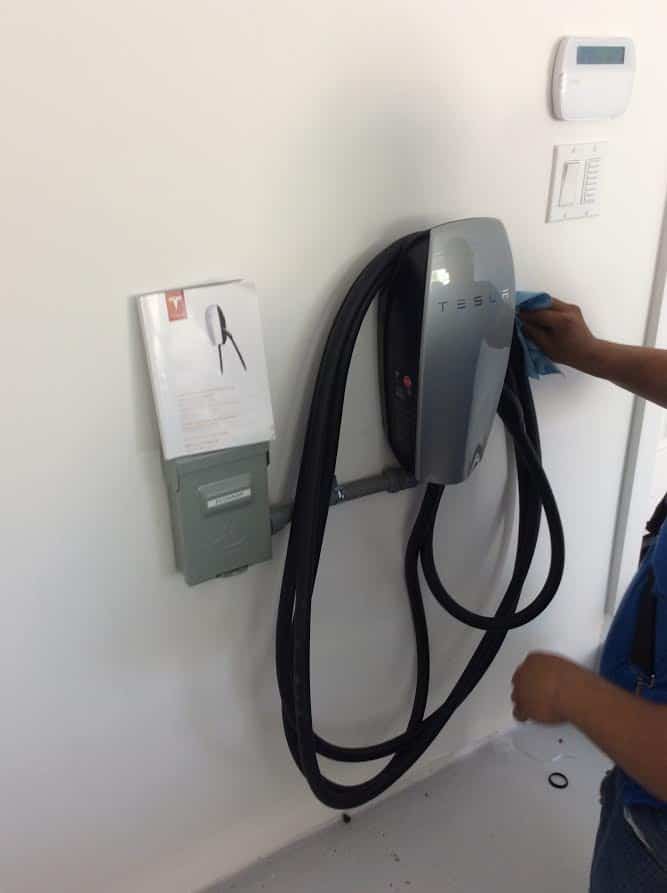 If you’re considering buying an electric vehicle, you’ll want to have the best charging device for the car. There are two options when it comes to charging your new vehicle. These are referred to as Level 1 and Level 2 charging.
If you’re considering buying an electric vehicle, you’ll want to have the best charging device for the car. There are two options when it comes to charging your new vehicle. These are referred to as Level 1 and Level 2 charging.
- Level 1 Charging: Plug your car right into an outlet with the cord it comes with. You will get a low-level charge that is ideal for those who drive short distances and don’t deplete the car’s entire battery life. It takes about an hour to get 4.5 miles of battery back into your car. A full night of charging, or about nine hours, would be needed to replenish the whole battery.
- Level 2 Charging: Charge your car with an EV wall mount or use a NEMA 14-50 outlet. This type of charge fills your battery up quicker. Different cars charge in different ways but with a Level 2 charge, it takes about an hour to get around 26 miles of power back into the car. This might be a more expensive route than Level 1 charging but if your commutes are longer this is the way to go.
How to Install an EV Charger?
When you decide to buy an electric vehicle and want to go with the wall mount, the next step is to install one in your home. Please note that you should have experience with electrical systems before performing any work in your home. If you are unfamiliar with installing electric car chargers, please consult with a professional electrician.
If you do not have electrical expertise, there is still good news. Many utility companies offer incentives for purchasing an electric vehicle, its charging station, and having one professionally installed. Be sure to contact your local utility company to find out what offers are available to you.
The first step in installing an EV charging point for your home is choosing it. Electric vehicles and plug-in hybrids in the US, except for Teslas, all use the same type of plug, an SAE-standard J1772. These may all work in the same way, but some chargers are very different than others. Below are some things to consider when picking out your new charger.
- Cost – EV chargers can range from $500 to over $1000 depending on a variety of different things. The two main contributors to the price are cord length and amperage.
- Installation type: A Level 2 charger is meant to be permanent. It is mounted to the wall using a bracket. However, there are some chargers that can be removed in case you want to take it with you if you move from your home.
- Amperage: Level 2 chargers are available in 16 or 30 amp versions. 30 amps should be the default. It allows for the maximum charge and, if you decide to purchase another car, will allow for charging two cars. 16 amps are perfectly fine for charging a single vehicle, such as the Volt.
- Length of Cord: This will depend on the location of the charger and where it has to plug into your car. 16 to 18 feet should suffice but the longer the cord you need, the more you will have to pay.
Once you find the perfect EV charger, the next step is to make sure your home is ready for charging your electric vehicle. You must make sure you have enough electrical service in your home before you can charge your car. If you don’t have enough power, you could constantly be tripping the breakers in your electrical panel. Older wiring in your home might also be an issue. If you have knob and tube or aluminum wiring, your home might need a rewire before you can add the extra load of a car charger.
You can see how important it is to consult with an electrician before attempting to wire an EV charger in your home. A lot of things can go wrong if you don’t know what you’re doing. It’s best to give a local electrician a call to see if they can help you out. It may cost less in the long run.
The Electric Connection has been providing electric vehicle charging installations to the people of Los Angeles for several years. We have at least one electrician in the city every day doing an EV charger installation. Our technicians also know EV charging for businesses. Please call us today to learn more about what we can offer you. We are open Monday through Friday from 8 am to 5 pm.




